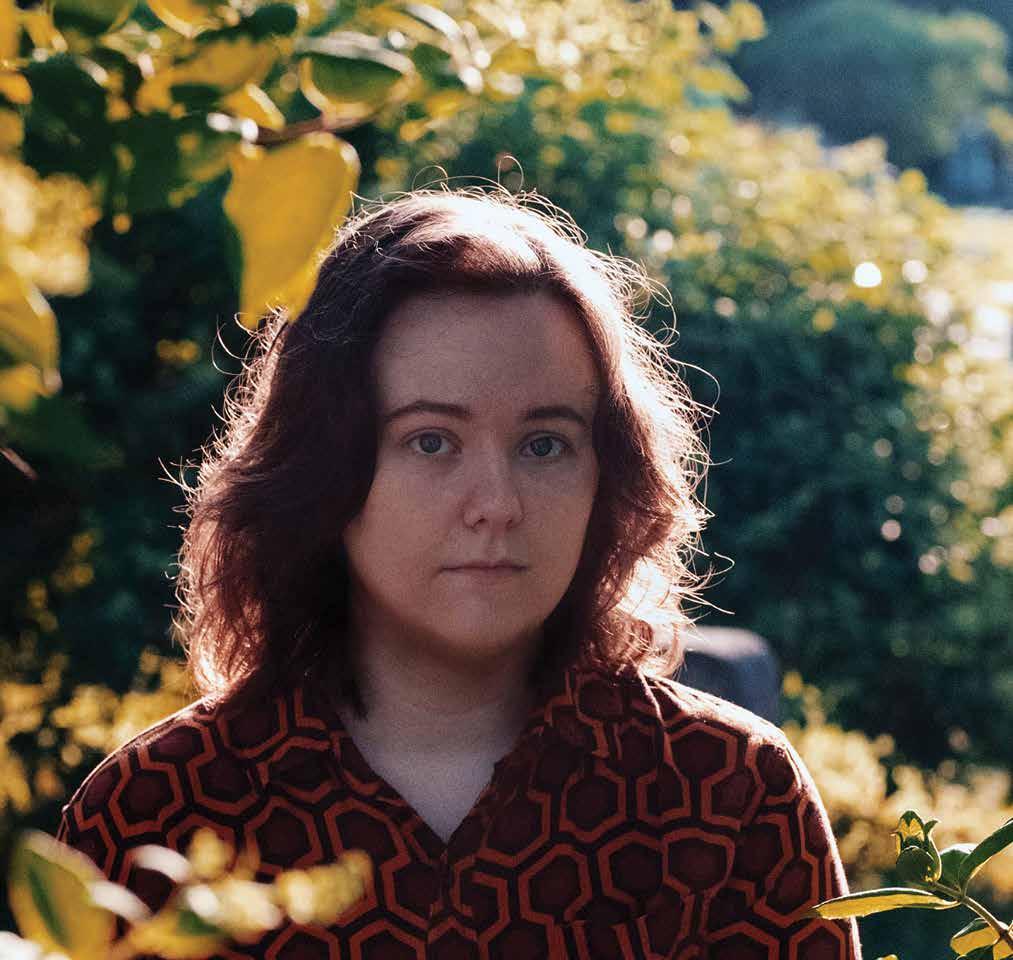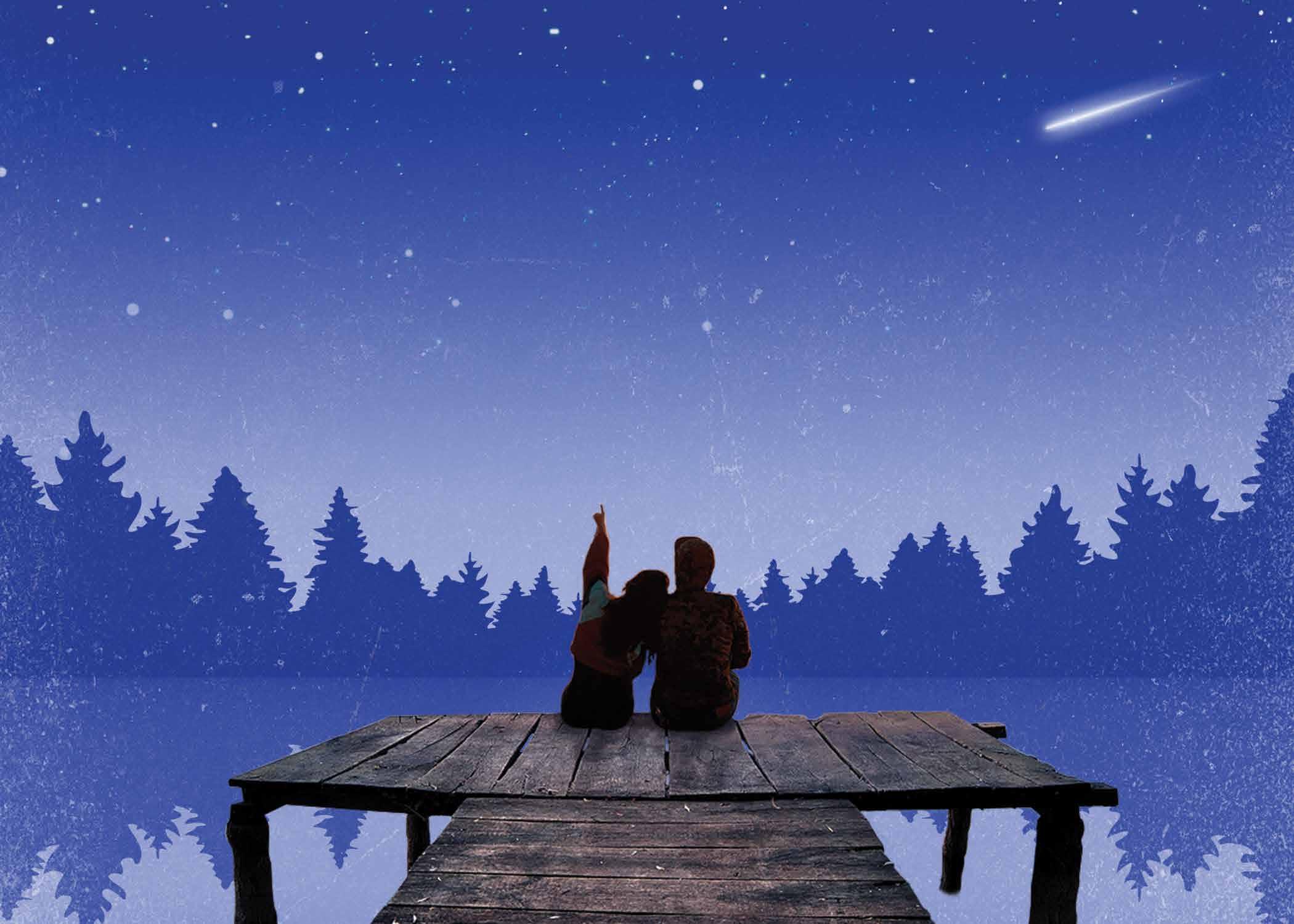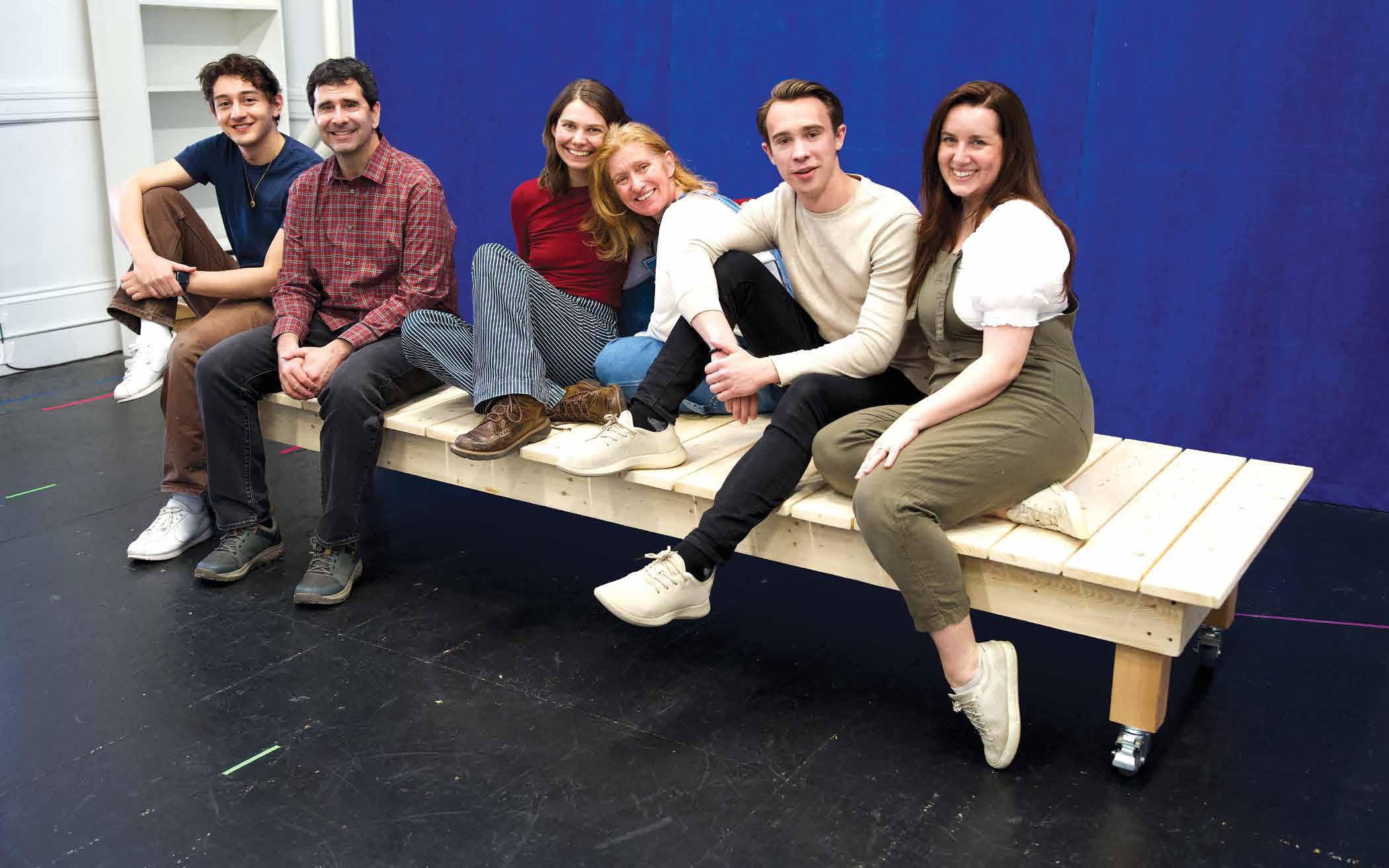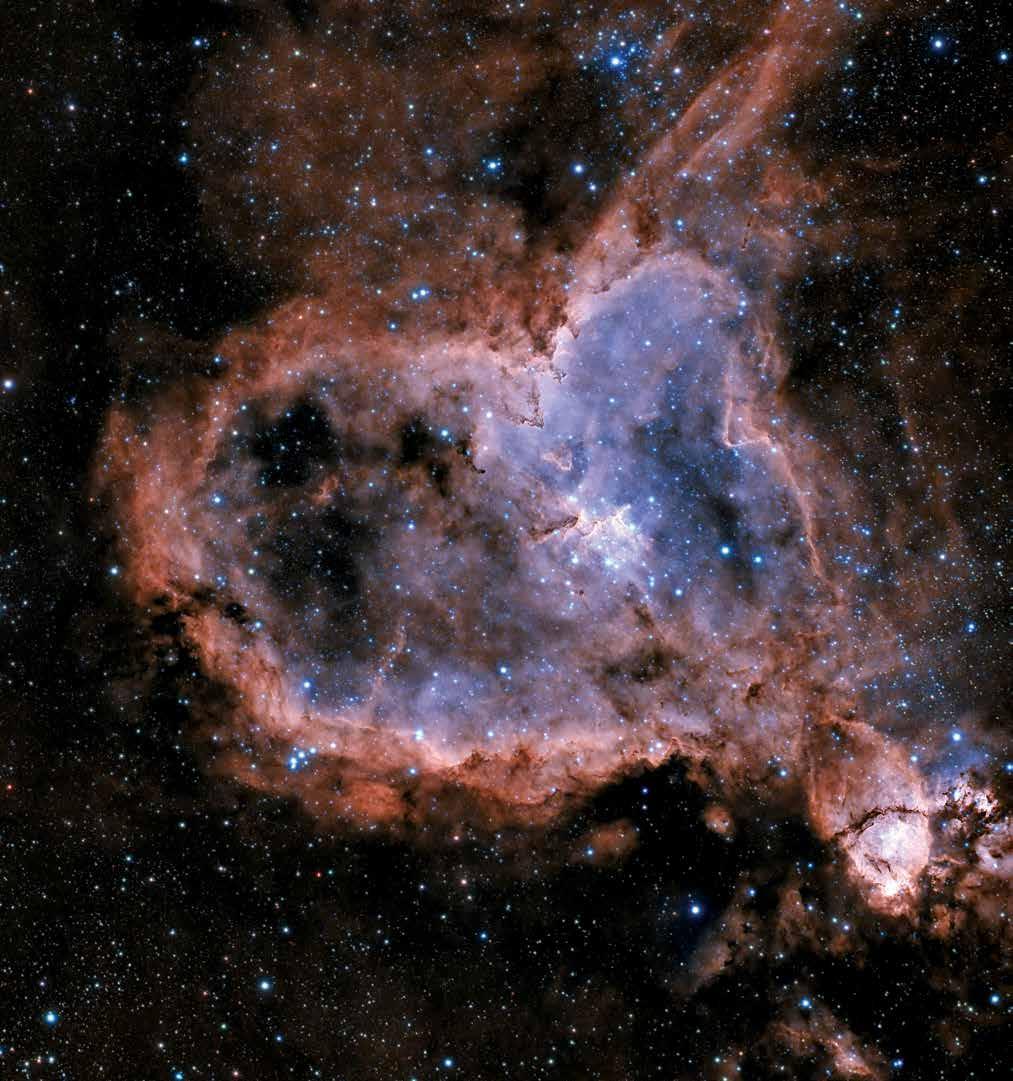
6 minute read
Light Pollution and Dark Sky Places
by Kimmarie McCrann
“...a small town in far northern Maine under a deep, dark, spectacular northern night sky.” -Not Quite Almost
We often associate pollution of the natural world with categories like air and water pollution. However, there is another kind which causes harm to the environment every night: light pollution. DarkSky International, the leading nonprofit organization combating light pollution in the United States, defines light pollution as “the human-made alteration of outdoor light levels from those occurring naturally.” A side effect of industrial civilization, light pollution is the overlighting of natural skies which makes it very difficult, even impossible in some regions, to see the stars at nighttime. Not only does light pollution deprive humans of spectacular views of the cosmos, but it has increasingly negative impacts on climate change, migratory animals, and overall human health.
According to a 2016 study published in Science Advances, 80 percent of the world’s population lives under light pollution, with 99 percent of the people living in Europe and the United States experiencing skyglow at night. An average year in the US alone uses about 120 terawatts of energy in outdoor lighting, which is enough energy to light all of New York City for two years. Only the most remote regions of the world, including sections of Siberia, the Amazon, and the Sahara Desert, are in total darkness. Astronauts from the International Space Station have observed light pollution growing, with glowing cities on Earth becoming increasingly easy to view from space over the past few decades. Fifteen million tons of carbon dioxide are emitted each year to power residential lighting, which gets stuck in the Earth’s atmosphere and adds to global warming and climate change risks.
So, what exactly causes light pollution? Several of the primary causes include streetlights, outdoor residential lights, electronic advertising, sports stadiums, and factory lighting. When these lights are left on 24/7 without a motion sensor or timer, they greatly contribute to the unnatural overlighting of the sky. These lights are particularly adverse when unshielded and pointed upwards towards the heavens, rather than only lighting the ground and necessary areas for sightlines to the human eye. Additionally, most wasted outdoor lighting consists of harsh blue fluorescent lighting, rather than a softer, warm-toned alternative. Light temperature is measured in degrees Kelvin (K), and warmer lights (3000K or less) have the least impact on light pollution. Since blue light can simulate daylight and has an extremely high temperature (typically 4500–6500K), it too easily brightens the night sky.
An empty parking lot or sports arena that is lit up all night doesn’t serve any human activity, and only confuses local animals and insects. Migratory mammals accustomed to following natural light patterns have become progressively confused by excess night lighting, which is disrupting their paths and increasing mortality rates. Sea turtles are commonly affected by light pollution, because when their eggs hatch at night, the infant turtles are supposed to follow the light of the moon to safety in the ocean. However, many turtles are distracted by lighting from residential houses ashore and travel in the opposite direction, leading to their untimely deaths due to dehydration or traffic. Fireflies are in danger as well because the males are competing with artificial light and unable to attract female counterparts to reproduce. As a result, fewer fireflies are born each year, and it is almost impossible to see any at all in highly lit areas of the world. Tree frogs are experiencing similar difficulties because male tree frogs tend to stop or lessen their mating call in areas where there’s lots of light. Monarch butterflies and wild salmon are confused by artificial light, causing them to migrate more randomly during the year and off their typical, safer travel courses. Thousands of migratory birds have died or been caught in confusion as a result of the annual 9/11 “Tribute of Light” public art installation in NYC, when two beams of intense blue light shoot up from where the Twin Towers once stood. And that’s just from two lights. One can imagine what disruptions are being caused by the bright lights of cities all around the world.
Human beings are also detrimentally affected by light pollution. As a species, we adhere to a circadian rhythm, an intrinsic biological clock which follows the natural day and night cycle. This rhythm tells us when to sleep and wake up, and is greatly influenced by photoreceptors in the eyes which are more sensitive to blue wavelengths of light. According to the American Medical Association, “it is estimated that white LED lamps have five times greater impact on circadian sleep rhythms than conventional street lamps.” Research suggests that exposure to artificial light at night (LAN) is associated with poorer sleep quality, impaired daytime functioning, and increased levels of obesity and depression. Additionally, several studies over the last few decades have indicated that humans are at a higher risk for hormonal-related diseases like breast or prostate cancer with exposure to too much harsh light. LAN also suppresses the body’s production of melatonin, which induces sleep, has antioxidant properties, boosts the immune system, and helps the functioning of the thyroid, pancreas, ovaries, testes, and adrenal glands. In 2007, the International Agency for Cancer Research declared night-shift work a probable human carcinogen.

There are many negative cultural implications associated with light pollution as well. Light pollutant researchers have discovered that we are losing our view of the sky at an astonishing rate of 10% each year. The Indigenous Wabanaki peoples of northeast America, with Wabanaki literally translating to “People of the First Light,” place a great deal of pride and religious association with the night sky. John
Bear Mitchell, a Wabanaki lecturer currently working at the University of Maine, says that his culture believes that the stars are fires lit by our ancestors once they have passed away. And then, when we pass away, we search the cosmos to find the correct fire that our loved ones are gathered around, and we join them. Losing sight of the stars can make young Wabanaki people feel disconnected from their ancestry and history. And for all people, the stars often represent a sense of greater purpose and serve as a reminder of our small size in the large universe. Looking above at the vast night sky can help people to breathe and remember that their worldly problems aren’t so terrible in the grand scheme of things.
There are still places where people can go to experience the natural night sky. These rare locations are known as Dark Sky Places, which have gone through critical assessment by the International Dark Sky Places program. The institution is an independent thirdparty organization that reviews the dark sky conditions and protection practices of candidate locations, and certifies only the most outstanding ones that meet all criteria. Several of the eligibility requirements for a Dark Sky Place to become certified by DarkSky International are as follows; the Milky Way must be readily visible to the unaided eye, there are no nearby artificial light sources yielding significant glare, and any light domes present are dim, restricted in extent, and close to the horizon. Over 200 places around the world have been certified since 2001.
Dark Sky Places are most commonly national and state parks, recognized for their minimal light pollution and ideal stargazing. Katahdin Woods and Waters was the first International Dark Sky Place certified in the State of Maine and New England, and it remains today one of the darkest places in the eastern US. The only other official Dark Sky Place currently located in the state is the Appalachian Mountain Club’s 114,000-acre forest located in central Maine. These places are rated at a 1 or 2 on the Bortle scale. Developed in 2001 by American astronomer John E. Bortle, the Bortle scale operates on a ranking scale of 1–9, with 1 being the most pristine and darkest skies, and 9 representing a severely light-polluted sky. Only a few areas in the lower 48 states display class 1 or 2 skies, while the skies in many western national parks are class 3 or 4. For perspective, the Bortle score of Portland, Maine, is 7, while Boston, Massachusetts, has a score of 9.
The good news is that light pollution is one of the only kinds of pollution on our planet that is reversible. While the long-term effects of air, land, and water pollution are difficult to undo, if all the lights in the world went out tonight, we would be able to see the stars. They are still there, just shrouded by glare and an overabundance of light. Everyone can take part in the solution by becoming educated and aware of the kinds of outdoor lighting they have, and how often they keep these lights turned on. People can join social and activist groups like the Dark Sky Society, Dark Sky Maine, and Mountains of Stars to support educational and legislative efforts to eliminate light pollution. Even taking a trip to visit a Dark Sky Place and making memories under the night sky is a great way to contribute to astrotourism and the financial support of these parks. Maybe one day Times Square won’t need to be brightly lit all night, and we can see an even more spectacular view up above.











